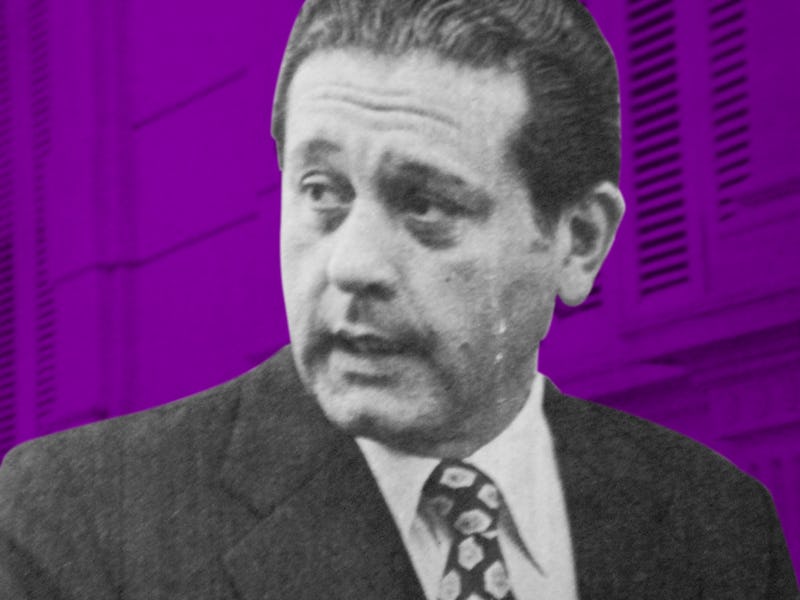René Favaloro: How an "Everlasting Friendship" Gave Birth to Bypass Surgery
Thousands of hearts have been saved thanks to an accident and a close friendship.

Each day, thousands of people with heart disease have René Favaloro to thank for each heartbeat. The Argentine scientist, honored in Friday’s Google Doodle, was one of the first to rewire the heart using bypass surgery, providing modern medicine with one of its strongest weapons against heart disease. Favaloro’s idea was inspired by a chance friendship he cultivated during his time at the Cleveland Clinic in the ‘60s.
His story begins in 1923, when he was born in La Plata, Argentina, a city about an hour south of Buenos Aires. Graduating from La Plata University at the top of his class, Favaloro, known for his “enduring love of the land and nature,” worked as a rural doctor before moving to the United States in 1967. Today, he’s best known as the father of coronary artery bypass surgery.
His procedure, introduced in 1967, would go on to give thousands of people with heart disease a new lease on life.
"“20th century cardiology could be divided into the pre-Favaloro and the post-Favaloro era."
In patients with heart disease, the main blood vessels that deliver oxygen-rich blood to the heart can become blocked with a waxy buildup called plaque. In coronary artery bypass surgery, other blood vessels are recruited to open up new back-road pathways to the heart, circumventing the blockages in the coronary artery. Favaloro was the first to take a blood vessel from another part of the body and attach it to the heart over the course of a three- to six-hour surgery.
Coronary bypass graft surgery is now the most common type of heart surgery in the United States.
How Coronary Bypass Surgery Was Born
When Favaloro first moved to the US to pursue research on heart surgery, he was introduced to F. Mason Sones, Jr., a doctor who served as the director of the clinic’s department of pediatric cardiology in the late ‘50s and ‘60s. His friendship with Sones set the stage for Favaloro’s most famous contribution to medicine.
Favaloro (left) and Sones visiting the Cleveland Clinic in 1982.
Before their friendship began, Sones has mistakenly invented a way to visualize the waxy buildups that are responsible for arterial blockages. While in the clinic, he accidentally injected dye into a patient’s coronary artery. This accident led to the invention of coronary angiography, a technique that doctors now use to take images of arterial blockages. By 1967, when Favaloro was comfortably situated at the Cleveland Clinic, Sones had taken images of 8,200 patients.
"That was the beginning of a deep and everlasting friendship."
Favaloro pored over those images, consulting with Sones to understand how blockages in the heart might be treated. Looking back on that time, Favaloro wrote in 1998: “That was the beginning of a deep and everlasting friendship.” It was also the birth of coronary bypass surgery.
Sones may have made the imaging possible, but it was Favaloro who took those images and developed a life-changing treatment with them. On May 9, 1967, Favaloro performed the first coronary bypass surgery on a 51-year old woman. That first surgery set the stage for many more to come.
Favaloro and Sones were both quick to credit each other with the important surgical procedure. Writing in a memorial article after Sones’ death, Favaloro said: “Without the work of Dr. Mason Sones Jr. — the most important contributor to modern cardiology — all our efforts in myocardial revascularization would have been fruitless.”
But Sones himself is said to have thrust the credit back upon Favaloro, noting that “20th century cardiology could be divided into the pre-Favaloro and the post-Favaloro era.”
In today’s post-Favaloro era, the NIH estimates that 14 million people live with coronary heart disease. Favaloro’s surgical technique doesn’t come without risks, but it can greatly enhance the chances that these people will live.
Favaloro died in 2000, years after his biggest contribution to medicine. His tragic death by suicide shook his home nation of Argentina, who mourned his death with a nationwide identity crisis. But his legacy still lives on today, in the millions of hearts that his procedure has kept beating.